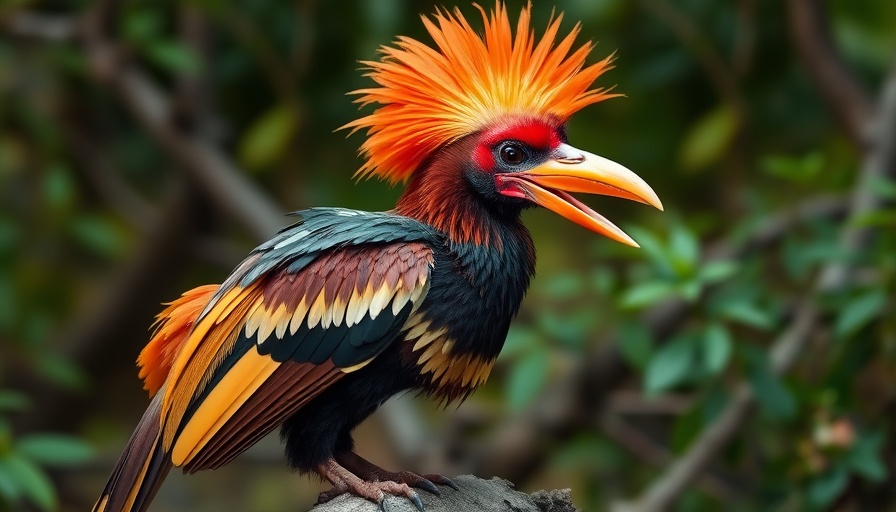
Meet the Hoatzin: Nature's Quirky Wonder
The Hoatzin (pronounced HWAT-zin) is not your everyday bird; it’s an anomaly that has fascinated ornithologists and bird lovers alike. Found in the dense jungles surrounding the Amazon River, this peculiar bird captures attention not just with its looks but with its unique behaviors as well. Imagine paddling down a tranquil forested oxbow lake in Ecuador, when suddenly, this ungainly creature—about the size of a chicken—flaps awkwardly into the trees. With its scraggly crest, long tail, and striking blue facial skin offset by vibrant red eyes, the Hoatzin certainly appears as if it were crafted by a whimsical committee of nature.
Leaves Are Its Only Delight
What differentiates the Hoatzin from most birds is its strict herbivorous diet. This bird exclusively consumes leaves, relying on a specialized digestive system that requires it to rest and digest for longer periods than most species. Unlike its insect or meat-eating relatives, the Hoatzin’s slow metabolism is a testament to its unique evolutionary niche, making it a fascinating case study for researchers.
Unusual Family Dynamics
Hoatzins are also notable for their social behavior. Their wheezy calls often mimic those of monkeys, indicating their high levels of social interaction. They nest over water, providing a protective strategy against predators. If threatened, their chicks exhibit a survival trait that is almost evolutionary magic: they can drop into the water and swim back to safety using vestigial claws on their wings, a feature that disappears as they mature. This unique adaptation sets them apart in the bird world and adds another layer to their intriguing life cycle.
The Hoatzin's Place in the Ecosystem
Ecologically, the Hoatzin plays a crucial role in its environment. By consuming vast quantities of leaves, it helps in maintaining the balance of its habitat. As scientists continue to study this unusual bird, they gain deeper insights into the intricate relationships between flora and fauna within the Amazonian ecosystem.
Curious to learn more about the Hoatzin and its intriguing behaviors? Explore BirdNote.org for fascinating insights into this bird and others that inhabit our world. Understanding these unusual creatures not only enhances our appreciation for biodiversity but also fosters a deeper connection to our planet.
 Add Row
Add Row  Add
Add 




Write A Comment